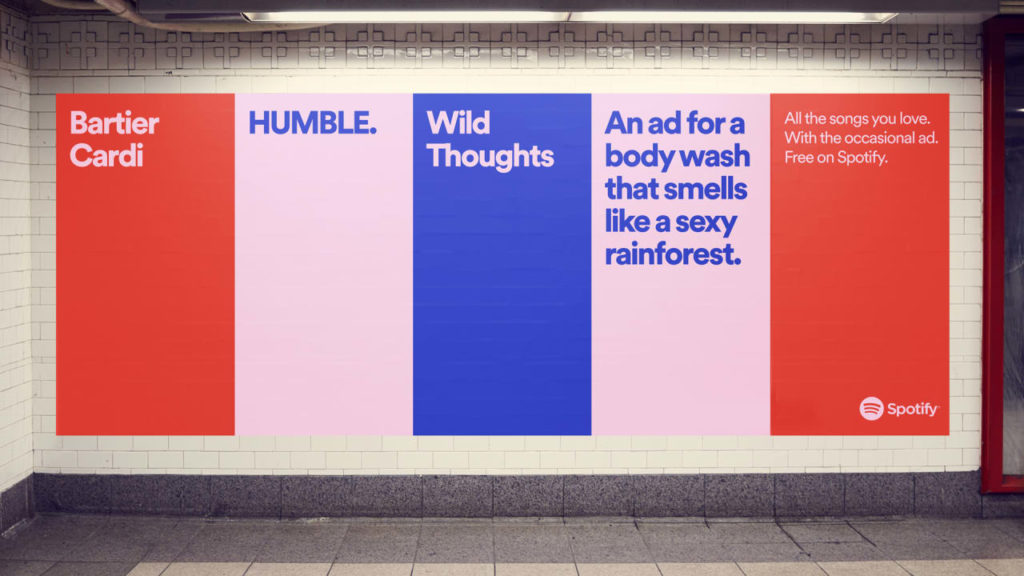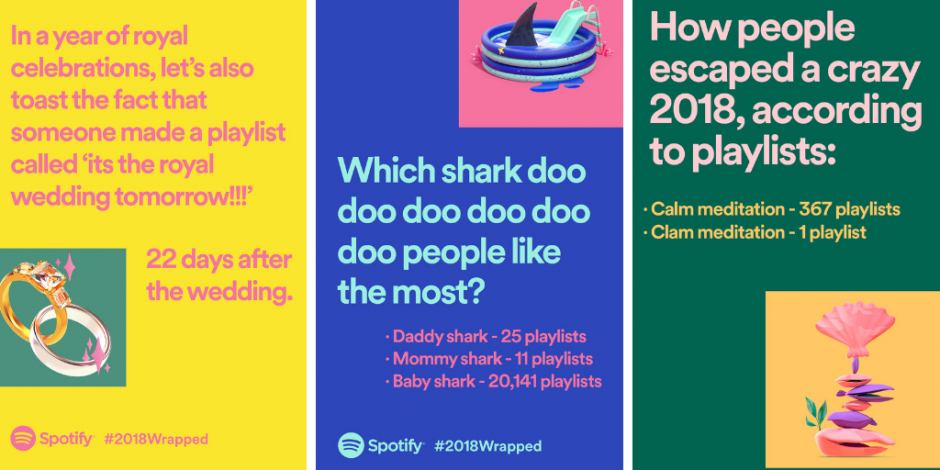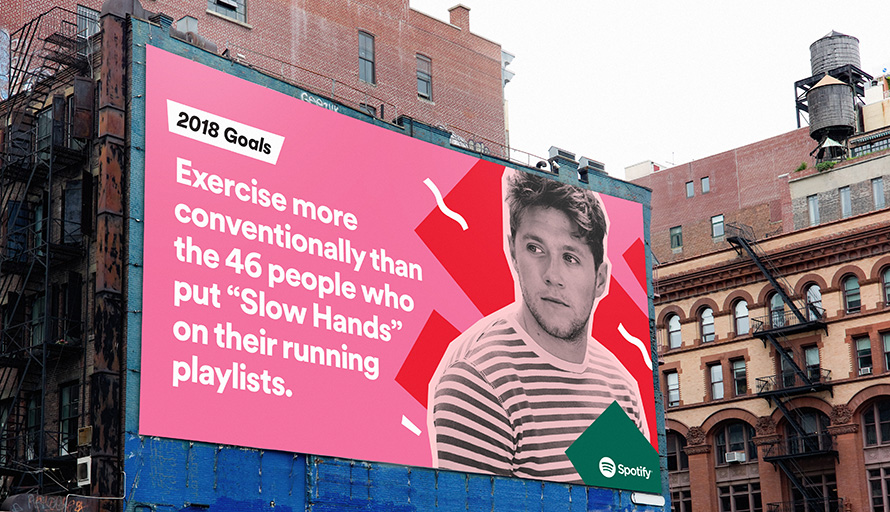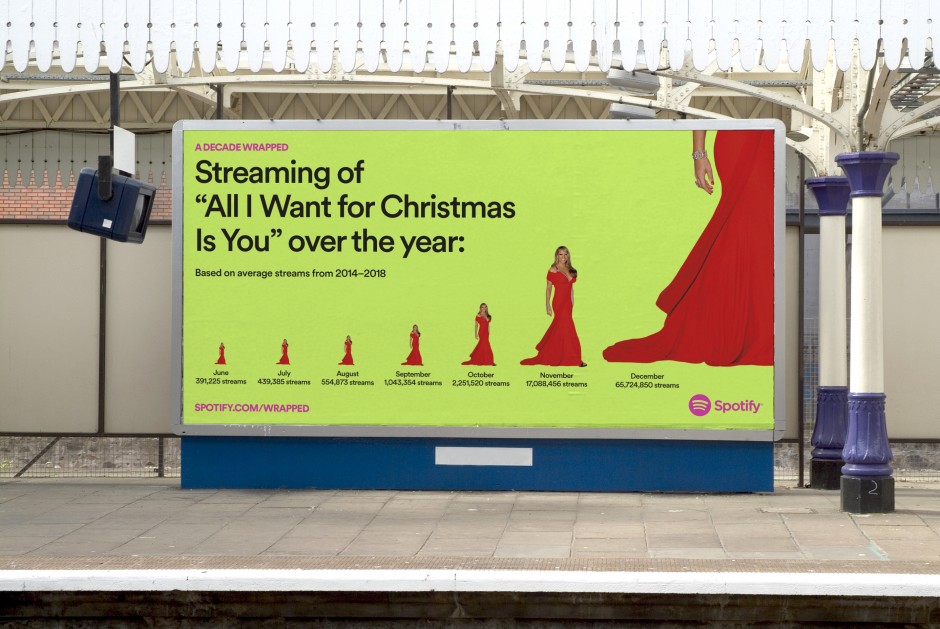Today we want to talk about one of our favourite brands. One of the few that we at adHOME feel connected to considering the frequency of which it is used in our daily lives. They’re true to the brand look, messaging and consistently evolve themselves, but always staying true to what makes them unique. That brand is Spotify.
To brand or be branded. This concept is in part inherent in Spotify’s success. As a brand, Spotify knows who they are and they aren’t afraid to communicate that way. They stay true to their mission, always creating new ways to add value to people’s everyday lives. This is the underlying note of everything they do, “That music isn’t just music, it’s so much more”.
In fact, music influences our lives every day. And if music influences our lives, and we in turn can make music and influence music – success, failure, creative evolutions – then there is something very powerful there to explore. These ideas inspired who Spotify would become – understanding the moment in history where it was needed, and using all the resources available to make it something valuable.
A New Era of Listening
In 2008, Spotify was born with a vision to create a legal digital music platform to respond to the growing challenge of piracy, which had resulted in low quality audio, risk for listeners and worse of all, loss of revenue for labels and artists.
To achieve their vision, Spotify partnered with the three largest record companies for access to their vast portfolio of songs. This quickly catapulted them to becoming the most successful streaming platform – surpassing apple music with +130 million paid subscribers.
Many credit Spotify for establishing the “freemium” model which has arguably brought them to where they are. The freemium model is an innovative pricing strategy which allows users to access a limited version of a product or service for free, but a paid subscription can be purchased which allows the user access to full benefits and features. In Spotify’s case, a paid subscription comes with the ability to infinitely skip songs, create playlists and enjoy your music ad-free. As leaders in their market, they continue to convert free subscriptions to paid on a daily basis.

Spotify’s key is one unique aspect: leverages algorithms associated with personal preference, mood, or trends to personalize the listener’s experience. So, the more you use Spotify, the better it is at suggesting new songs and creating playlists specifically for you. This idea is fueled by one key concept: music’s relationship with human experience. Emotions are tied to music and they use big data, artificial learning, and machine learning techniques to create a personal connection to the platform.
How does it work: The AI looks at songs you listen to, specific characteristics of those songs to custom cater the music experience. Because Spotify has so much data on your listening habits, it can even curate playlists depending on different weather conditions.
Spotify considers playlists to be their competitive differentiator, with annual reports showing that listeners spend 1/2 their time on Spotify listening to playlists whether it be their own, or ones by Spotify’s editors. To capitalize on this, every week users are delivered a “Discover Weekly” custom playlist that includes primarily new music based on a user’s favorite artists, and also introduces them to new artists based on their specific listening history (i.e. number of times listened to certain track, whether user saved track to their own playlist, whether user visited artist’s page after listening). In less than a year, Discover Weekly spun 5 billion songs for over 40 million people which is more listeners than Apple Music and Tidal combined.
Through this, they managed to find success by monitoring and analyzing user data as a means of improving their platform. Arguably one of the only brands who have been able to do this and actually gain market share since Spotify’s main focus is on adding value and creating an experience. It can even be seen in the ads they create, poking fun at all of the trends and insights they capture about us.



Spotify is able to capture the feelings tied to life and translate them into a personalized music experience unlike other music platforms. Each user creates an average of 600 gigabytes of data per day that the company uses to perfect its algorithms/machines to improve customer experiences and extrapolate insights.
Spotify also crawls the web looking for info about music and understanding what people are saying about specific artists and songs, as well as which other artists and songs are being discussed alongside them. However, less frequently discussed is Spotify’s use of data to spot hits in the making and their ability to ‘create a hit single’ through their platform.
Spotify treats every song on the service as a beta test. The service monitors the number of plays songs receive and utilizes algorithms to spot songs that are starting to gain popularity. Once a song has reached the algorithm’s threshold, the song is funneled into a series of tests to discover what is known as its hit potential. To do this, Spotify uses a strategy it calls “playlisting”. Through this process, songs are added to Spotify playlists with smaller numbers of active followers. They monitor response and if the “numbers look good”, the song is upgraded to playlists with more subscribed listeners and it enters a new round of competition with other top performing songs.
This process continues until the most successful songs hit the major playlists. According to Spotify, “By the time a song lands on Today’s Top Hits playlist, it’s been so relentlessly tested that it almost can’t fail”. Over 30% of music streamed on Spotify is made by its editorial team or algorithms, taking on the role of a traditional record label. Spotify takes out the middleman, the label, so that artists have ownership over their music and thereby receiving a larger percentage of profits without the fear of not being heard over other artists.
Big Data and Music
Spotify uses its data analyses to shape marketing campaigns in different areas of the world. Data and insights specific to that region or similar regions are pulled and used for campaigns. For example, they may run the same campaign in Chicago, as an area in the Netherlands – based on music preferences, these areas are more similar to Chicago than Austin, New York, etc.
Out of the insights driving these choices, connections can be made between the loop of influence between music and culture, as well as music and behaviour.
For example, when you start to see an eclipse happen in a certain part of the country or the world, you’ll start to see streaming that is impacting or mirroring that behavior. Songs like “Total Eclipse of the Heart” spike in the culture.

The data that is pulled from these behaviours establish trends that can be used in many ways, creating a highly engaged, connected audience that are experiencing something personal on this platform. They are primed to take in information unlike on other platforms and there is an understanding that we all have a place on Spotify, even brands.
The percentage of Americans who listen to streaming audio has doubled since 2012 with both music and podcasts having contributed to this growth. This in turn has created a huge market and one of the top social platforms for brands to advertise on.
Spotify boosts emotional engagement with ads better than competitors and people are 18% more likely to report purchase intent after seeing a video ad on Spotify vs. other competitor entertainment platforms. In many ways to use Spotify’s inherent innovation to create unique ways of connecting with our audiences. It’s about taking inspiration from the essence of spotify, recognizing connection and the spaces people go. Finding ways to combine that in a way that adds value to their lives.